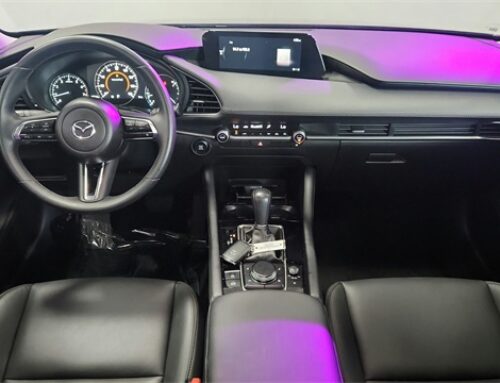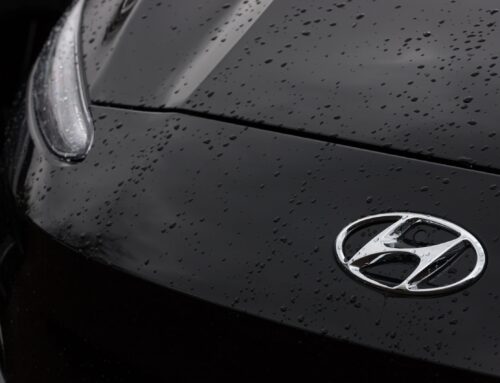What’s The Difference Between AWD and 4WD?
4 Wheel Drive is more useful for severe terrain such as off-roads whereas All Wheel Drive provides more versatile, everyday use for adverse weather conditions while maintaining greater fuel efficiency
Winter is Coming: Let’s Talk About AWD and 4WD

If you’re shopping for a new SUV or crossover you might be wondering about the difference between all-wheel drive (AWD) and 4-wheel drive (4WD). At first glance, these terms seem to be interchangeable. You”Γäóve only got 4 wheels, so isn’t all-wheel drive the same thing as 4-wheel drive? Logical question, but the answer is “not exactly”┬¥.
Here’s a quick guide to the differences between AWD and 4WD to help you make a smart choice when you buy your next vehicle.┬á┬á
What is 4-Wheel Drive?
The term “drive”┬¥ refers to which wheels get power from the engine. Once upon a time cars and trucks were only available with front-wheel drive, rear-wheel drive, or 4-wheel drive. 4-wheel drive cars and trucks were usually part-time 4-wheel drive. This means you”Γäód drive around with power going to the rear wheels most of the time.┬á
But when driving on snow or mud or any surface that allows sufficient slipping to happen between the front and rear wheels, you could push a switch or flip a lever and the front wheels would join in. Many trucks are still designed this way, like the Chevy Tahoe or Ford F-150. These systems are very capable in loose terrains like mud, snow, or sand. 
The only catch is that you shouldn’t engage the 4WD when you’re on hard, dry pavement. The reason for this is that the front and rear axles are “bound”┬¥ together by a center differential. Basically, this ensures that power will always be going to both axles, but it also means that you need a certain amount of wheel slip to happen, or else the vehicle will be harder to turn and you”Γäóll put undue strain on the drivetrain.┬á
4WD is often the better choice for people who are planning on serious off-roading or using their vehicle in more challenging situations. 
Pros of 4-Wheel Drive:
- 4WD can perform better in severe terrains, like deep unplowed snow, sand, or mud. 
- Truck-based 4WD systems tend to be stronger and more ruggedly built than AWD.
Cons of 4-Wheel Drive:
- Most 4WD systems aren’t designed to operate on hard, dry terrain with no slip.┬á
- Part-time 4WD systems only offer additional traction when they can be engaged. 
What’s Different About All-Wheel Drive?
All-wheel drive systems were developed for consumers in the early 1980s, with Audi’s Quattro system being the first to market. AWD was developed so that cars would be able to have power going to both axles all the time, even on dry, hard pavement where no wheelspin would occur.┬á
These systems use an open (or limited slip) center differential which allows differences in speed between the wheels on the front and rear axle. 
Basically, it makes it possible to have power going to both axles all (well most) of the time. You don’t have to think about turning it on, it works on any road, wet or dry and it’s ready for you in snow and mud. The downside is that AWD systems, especially on cars and small crossovers are usually biased towards fuel economy.┬á
This means an AWD vehicle may not send power to the rear wheels until after they slip. This makes them less capable in extreme conditions like deep, unplowed snow, deep sand, or thick, soupy mud. Part-time 4WD on the other hand will always send power to both axles. 
AWD is simpler and more fuel-efficient. It’s usually plenty for most people, as long as they don’t plan on deliberately going off-road.┬á
Pros of All-Wheel Drive:
- AWD is always on, it can help out on wet, rainy roads and anywhere else you drive.
- AWD systems are usually lighter and more fuel-efficient than truck-based 4WD systems.
Cons of All-Wheel Drive:
- Many AWD systems aren’t quite as capable in severe terrain as 4WD systems are.┬á
- AWD systems aren’t as strong and rugged as truck-based 4WD systems.┬á
Wait, What About Full-Time 4-Wheel Drive Though?
You just had to ask, didn’t you? OK, there’s one curveball. So full-time 4-wheel drive systems, like the one in the Toyota Land Cruiser, for example, send power to both axles all the time, like an AWD systembut they also allow the center differential to sync up the front and rear wheels like a true 4WD system. Basically, they give you the best of all worlds (except for fuel economy).┬á
But these systems are more costly and not that common these days as AWD has become so sophisticated with computer controls that they aren’t as necessary. But if you find a vehicle that has a system like this (especially with a locking center differential) and you aspire to become an off-road master of the universe go for it.
Just remember that full-time 4WD isn’t something most people need and it’s not even necessarily practical and it kills your gas mileage so we wouldn’t seek it out without a really good reason.┬á
Choosing AWD vs 4WD?
Well, the good news is that the computer controls on AWD systems have become so sophisticated that they have dialed out most of the compromises at this point. Subaru and Audi in particular are known for their especially capable AWD systems. Many modern SUVs, crossovers, and trucks even come with computer systems that let you dial in the specific type of terrain you’re on (i.e. mud, snow, ice).┬á
This allows the car’s computer to change the behavior of the AWD system. It alters how quickly it responds to slipping wheels for example, which wheels it sends power to and when. It takes most of the guesswork out of it. 4WD vehicles with computerized systems, like the Chevy Silverado, can even improve your off-road driving prowess and help keep you out of trouble in sticky situations.┬á
For most people, a modern AWD system is more than adequate for driving on muddy driveways or snow-slicked streets. The majority of these systems will get you up a snowy driveway without too much hassle. They also take the guesswork out of switching the system on and off. 
Your Next 4WD or AWD Vehicle is at Major World
Winter is coming. Heed the motto of House Stark and head down to Major World to find your AWD or 4WD vehicle. The Farmer’s Almanac is predicting a snowy winter for us in New York, it pays to be prepared. Check out our competitive inventory through our online search portal. Get pre-qualified for financing right here. Don’t settle for anything less than the best SUV dealership near the NYC Metro Area. You deserve the Major World standard of customer care. Give us a call now at (347) 516-0412.┬á




